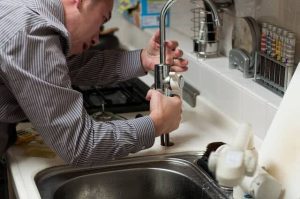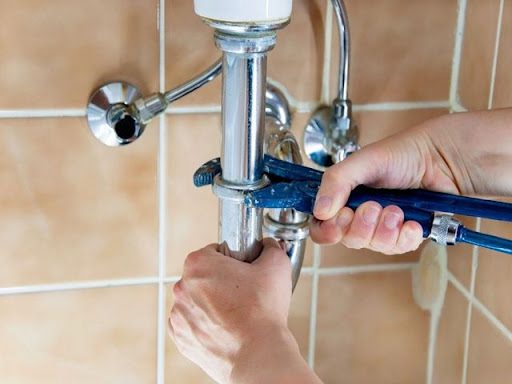Plumbing Myths You Should Stop Believing. When it comes to plumbing, there are plenty of myths and misconceptions that can cause confusion and even lead to costly mistakes. Whether you’re a homeowner trying to maintain your plumbing system or simply looking to avoid a plumbing disaster, it’s crucial to separate fact from fiction. In this article, we will debunk some of the most common plumbing myths and explain the truth behind them. By understanding the facts, you can ensure that your plumbing system runs smoothly and efficiently.
Common Plumbing Myths and the Truth Behind Them
Plumbing myths often get passed down from generation to generation, but that doesn’t mean they’re accurate. It’s essential to differentiate between what you’ve heard and what’s actually true to avoid unnecessary repairs and headaches.
1. Myth: “Flushable Wipes are Safe to Flush”
One of the most common plumbing myths involves flushable wipes. Many people believe that these wipes, marketed as “flushable,” are safe to flush down the toilet. However, this couldn’t be further from the truth. While these wipes may dissolve to some degree, they do not break down as quickly as toilet paper. As a result, they can cause blockages in the plumbing system, leading to clogged toilets and even sewer backups.
The Truth: Only Toilet Paper Should Be Flushed
To avoid clogs and damage to your plumbing system, only toilet paper should be flushed. Anything else, including wipes, paper towels, and feminine hygiene products, should be disposed of in the trash. While flushable wipes may seem convenient, it’s better to be safe and dispose of them properly to keep your plumbing in good working order.
2. Myth: “Hot Water Solves All Drain Clogs”
Many people believe that pouring hot water down the drain can solve all kinds of clogs, especially those caused by grease or soap buildup. While hot water can help break down certain substances, it is not a universal solution for every type of clog.
The Truth: Hot Water Only Works for Specific Clogs
Hot water can work for some clogs, such as those caused by grease or soap scum, but it is not effective for all types of blockages. For example, hot water will not help with clogs caused by hair, tree roots, or solid objects. In these cases, a plunger, drain snake, or professional plumber will be needed to clear the blockage. Always be cautious when using hot water, as it can also damage certain pipes, particularly older plastic pipes.
3. Myth: “Plumbing Problems Can Be Fixed with Chemical Drain Cleaners”
Chemical drain cleaners are often marketed as quick fixes for clogged drains, leading many homeowners to believe they are a reliable solution. While these products may temporarily clear a clog, they can cause significant long-term damage to your pipes.
The Truth: Chemical Drain Cleaners Can Harm Your Pipes
Over time, the harsh chemicals in drain cleaners can corrode pipes, weaken seals, and even cause leaks. They may also damage septic systems and the environment. Instead of using chemical drain cleaners, consider using safer alternatives like a plunger, a drain snake, or a mixture of baking soda and vinegar. For stubborn clogs, it’s best to call a professional plumber who can safely and effectively clear the blockage.
4. Myth: “A Leaky Faucet Isn’t a Big Deal”
Many homeowners underestimate the impact of a leaky faucet, thinking it’s just a minor annoyance. However, a leaky faucet can waste a significant amount of water over time, leading to higher water bills and potential damage to your plumbing system.
The Truth: A Leaky Faucet Can Cause Bigger Problems
A single leaky faucet can waste up to 3,000 gallons of water per year, according to the U.S. Environmental Protection Agency. This not only increases your water bills but can also lead to corrosion and rusting in your pipes. Additionally, consistent moisture around fixtures can contribute to mold growth. If you notice a leaky faucet, it’s important to fix it promptly to avoid these issues. Plumbing Myths You Should Stop Believing
5. Myth: “You Don’t Need to Maintain Your Water Heater”
Many people assume that water heaters are maintenance-free and will continue to work properly as long as they’re left alone. This myth can lead to expensive repairs and shortened lifespans for your water heater.
The Truth: Regular Water Heater Maintenance is Essential
Just like any other appliance in your home, your water heater requires regular maintenance to function efficiently. Flushing the tank annually to remove sediment buildup, checking the anode rod, and inspecting the temperature and pressure relief valve are essential steps to extend the life of your water heater. Without proper maintenance, your water heater could fail prematurely, leaving you without hot water and facing costly repairs.
6. Myth: “Low Water Pressure is Normal”
If you’ve ever experienced low water pressure, you might have been told that it’s a normal occurrence. While low water pressure can sometimes be due to temporary factors, such as a neighbor using water at the same time, it is often a sign of a larger issue.
The Truth: Low Water Pressure Can Indicate Plumbing Problems
Low water pressure can be caused by a variety of issues, including clogged pipes, mineral buildup, a malfunctioning pressure regulator, or even leaks in the plumbing system. If you notice consistently low water pressure, it’s important to have a professional plumber inspect your system to diagnose and fix the underlying problem.
7. Myth: “Plumbing Problems Will Fix Themselves”
Another common myth is that plumbing problems, such as leaks, clogs, or strange noises, will eventually resolve themselves. While this may be true for very minor issues, ignoring plumbing problems can lead to bigger, more expensive issues down the road.
The Truth: Plumbing Problems Require Timely Attention

Plumbing issues rarely fix themselves. Even seemingly small problems, like a slow drain or a dripping faucet, can escalate into major plumbing emergencies if left unaddressed. Delaying repairs can result in water damage, costly repairs, and even health hazards, like mold growth. It’s always best to address plumbing problems promptly to avoid further damage.
How to Avoid Plumbing Mistakes and Keep Your System in Top Shape
Now that we’ve debunked some common plumbing myths, it’s important to focus on maintaining your plumbing system to avoid costly repairs and ensure everything runs smoothly.
1. Regular Inspections and Maintenance
Schedule regular plumbing inspections to catch potential problems before they become emergencies. A plumber can check your pipes, water heater, and other fixtures to ensure everything is functioning properly and make necessary repairs.
2. Use Water-Saving Fixtures
Installing water-saving faucets, showerheads, and toilets can reduce water waste and prevent strain on your plumbing system. Additionally, these fixtures can help you save money on your water bill while being environmentally friendly.
3. Avoid DIY Repairs for Complex Issues
While some small plumbing issues can be handled by homeowners, it’s best to leave complex repairs to professionals. Attempting DIY repairs on significant plumbing issues can often make the situation worse and result in higher repair costs.
Conclusion
There are plenty of plumbing myths that can lead to confusion and unnecessary mistakes. By understanding the truth behind common misconceptions, you can protect your plumbing system and avoid costly repairs. Remember, when in doubt, always consult with a licensed plumber to ensure your plumbing is in top condition. Regular maintenance, timely repairs, and proper care will help keep your plumbing running smoothly for years to come. Plumbing Myths You Should Stop Believing

